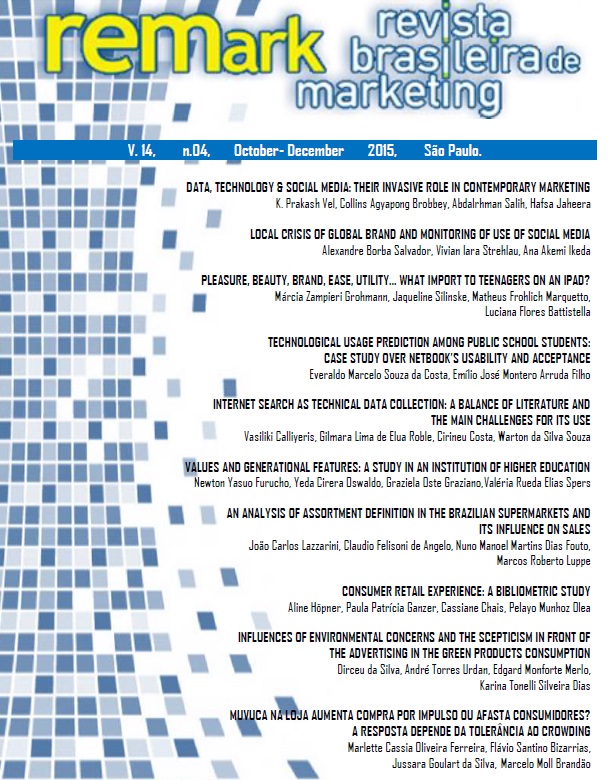Pleasure, Beauty, Brand, Ease, Utility... What Import to Teenagers on an Ipad?
DOI:
https://doi.org/10.5585/remark.v14i4.2822Keywords:
Intent to Use, Ipad, Technology Acceptance Model.Abstract
Technological advances are being created faster with the goal of creating consumer expectations and desires for them to be sold. The objective of this research is to analyze the influence of the emotional, esthetic and ergonomic perspectives of the intention to use the Ipad.Data were collected through a questionnaire based on Tzou and Lu (2009), which was applied to high school students of a public school in Santa Maria/RS. This research is quantitative and descritive.As a result, the strongest relationships were found between the Ipad beauty review and the pleasure of using the Ipad (R2 = 53.7%), followed by the pleasure of using the Ipad and Ipad intended use by students (R2 = 35.3%).








